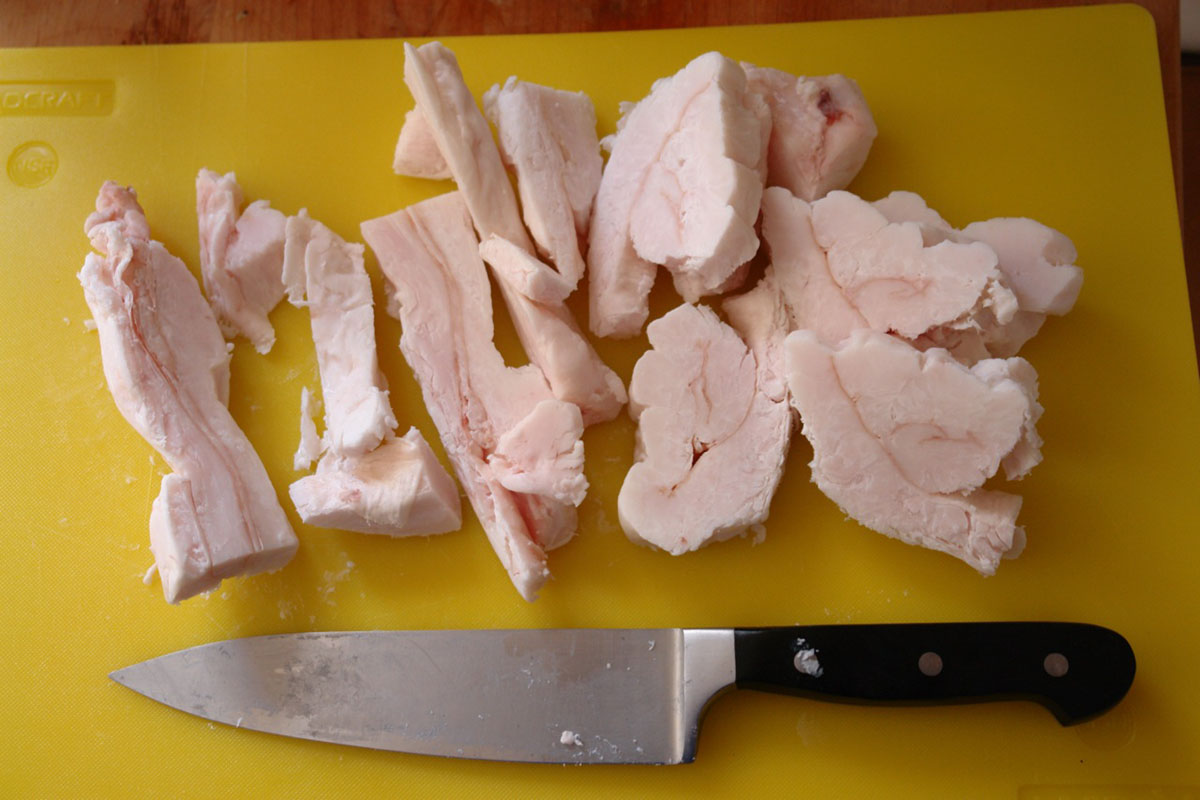Table of Contents
Lard is becoming popular as "your grandmother's secret ingredient." Every good cook knows that pie crusts come out flakier when they are made with lard. It's impossible to make tamales without lard. Celebrity chefs are popularizing thin slice of lardo, a product Americans used to call fatback and Europeans used to call salumi, served on toast. Farmers markets sell varietal lard from heritage pigs as a locally source delicacy. In the United States, lard is definitely back in the larder. But is it a healthy food? Is it as healthy as butter, olive oil, or margarine?

- Lard contains less saturated fat, 40 percent, than butter, which contains 54 percent. However, both compare unfavorably to olive oil, which is about 14 percent saturated fat, or soft-tub margarine, which is 10 to 20 percent saturated fat.
- Lard is healthier than partially hydrogenated vegetable oils like Crisco. These "fracked" vegetable oils are made an extremely high temperature and pressure with heavy-metal catalysts. They contain none of the natural antioxidants found in unprocessed olive oil or raw coconut oil.
- Consuming lard (or butter) on a regular basis may or may not raise your cholesterol levels. There is a maximum level of cholesterol your body can absorb from digested food on any given day. Beyond about 350 mg of cholesterol, excess cholesterol simply goes into your stool and is removed by bowel movement. Your body makes 80 to 85 percent of all the cholesterol in your bloodstream. If you are on an extreme low-cholesterol diet, which very few people need, then you should not consume any animal fat, neither lard nor butter. But if you are not, lard and butter are permissible in limited amounts, like any other fat, simply because you like them.
Generally speaking, lard, butter, and olive oil all have their benefits in the diet when consumed in modest amounts. Your body actually needs some fat. Lard and butter can provide the oleic acid that your body uses to fill out its curves and for storing energy. The omega-6 fatty acids in lard and butter also activate your immune system.
The natural antioxidants in walnut oil, grapeseed oil, and other healthy plant oils don't survive high temperatures; use liquid plant oils only in applications in which they do not need to be cooked, such as salad dressings or on bread.
READ Praise The Lard: How Fat Was Framed
More important to your health, as long as you use animal fats in cooking and plant fats cold, is your selection of carbohydrates. Too many carbohydrates are harder for your body to process than too many fats. You can eat large amounts of fat that get stored in your fat cells; you may gain weight, but these fats will not cause metabolic issues. Too many carbohydrates, especially too many simple sugars, contribute to the problem of insulin resistance, which not only leads to diabetes, but also limits the amount of fat you can burn even if you work out and diet. Lard isn't a health food, but it's healthier than many other foods. Butter isn't a healthy food, but it is clearly superior to margarine, with the sole exception of margarine made with plant sterols (for instance, Benecol), and then only for people who need to lower their cholesterol by diet.
- van den Berg SA, Guigas B, Bijland S, Ouwens M, Voshol PJ, Frants RR, Havekes LM, Romijn JA, van Dijk KW. High levels of dietary stearate promote adiposity and deteriorate hepatic insulin sensitivity. Nutr Metab (Lond). 2010 Mar 27. :24. doi: 10.1186/1743-7075-7-24. PMID: 20346174 .
- Photo courtesy of rjl20: www.flickr.com/photos/rjl20/225856407/
- Photo courtesy of rjl20: www.flickr.com/photos/rjl20/225856449/
- Photo courtesy of rjl20: www.flickr.com/photos/rjl20/225856449/


Your thoughts on this